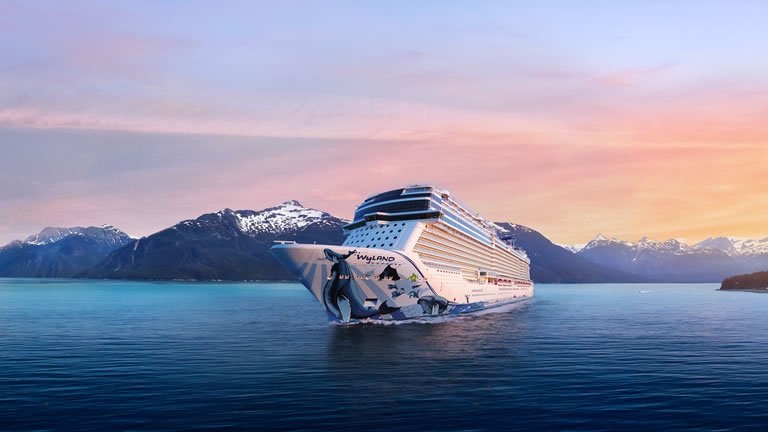First Time Cruising - Will I Get Seasick?

If you are a first time cruiser you are going to have a lot of questions about life onboard a cruise ship. One question that you are bound to have in mind might be about seasickness. If you haven’t been on the sea before, even in a small boat or a ferry, you may be wondering how you will travel on a cruise ship across one of the seven seas. Will I get seasick? No one really knows the answer to that until they are in the moment but here is some information to help you understand the condition and some insider tips on how to prepare for the worst case scenario.
What is Seasickness?
If you haven’t experienced it before how will you know if what you experience on the seas is in fact seasickness?
Seasickness is a form of motion sickness such as travel sickness, air sickness or car sickness. Experts guide that if you experience motion sickness in a vehicle on land, you may have the same risk of experiencing motion sickness on the seas.
For the uninitiated, seasickness may feel like dizziness; you may experience queasiness or even nausea. You may get a headache, break out in a sweat, even feel a bit tired. These symptoms could be one off (in the first few days of your cruise as you find your sea legs) or occasional. These symptoms should be temporary.
Medically speaking, sea sickness occurs when the brain receives a different message from your inner ear to what your eye sees. In cruising terms, you might see people on board are stationary, but the balance sensitive inner ear is sensing the movement of the ship. It’s the clash in messaging that causes confusion in the brain that then creates the symptoms of feeling unwell.

Stabilised Cruise Ships Help Prevent Seasickness
Seasickness on the ocean faring ships of the past was caused by the forward pitching or side to side rolling of the ship, which in days gone by, was much more prevalent than it is today. These days ocean cruising ships are equipped with stabilisers - which balance the hull so that it doesn’t roll from side to side as the ships in the days of yore did. While cruise ships can’t always avoid inclement weather, most leisure cruise ship itineraries are charted through calmer waters. If you know you are prone to sea sickness but still want to cruise, you may want to choose to take your maiden voyage in calm seas.
If you are wondering what stabilisers are and how they help with seasickness, they are a set of fins or rotors attached to each side of the cruise ship’s hull. Some stabilisers stick out at right angles to the hull (they look a bit like an aeroplane wing) and sensing the movement of the hull will applying pressure on the opposite side of the ship to balance the side to side roll of the ship. A feat of engineering, stabilisers have reduced the roll of ocean going cruise ships by up to 85%.
As a result – the incidence of seasickness in cruise passengers has greatly diminished. Knowing you are travelling on a ship with stabilisers might help alleviate worry about sea sickness. However, if you are prone to motion sickness it will be a good idea to talk to your doctor about your concerns. Your doctor can prescribe medicines or patches to alleviate the worst symptoms of seasickness.

Be Prepared Before you Board
If you have never experienced motion sickness on land you might avoid seasickness altogether, as is the case for many cruise ship passengers. If you want to be prepared regardless, there are over the counter products that you can carry on board just in case.
In the event that you do have the misfortune to experience seasickness on board your cruise ship, we suggest a few steps that may help you navigate your way through it. The middle of the ship is the most stable, so head there on the ocean side (as opposed to the inside) and let the stability, fresh air and horizon help you balance your body’s response.
It is recommended that you stay hydrated and avoid too much alcohol if you are affected. Natural remedies such as ginger can assist with feelings of nausea. Before you leave home, seasickness bands can be bought over the counter and having dry crackers on hand and a ginger drink might ease the symptoms. Report to the ship’s doctor if you can’t get on top of it.
A little bit of preparation and your modern day stabilised cruise ship will hopefully give you smooth passage, so you enjoy your cruise holiday. Bon Voyage!
Explore Our Cruises View all

13 Days Tampa to Tampa
Operator: Norwegian Cruise Line

30 Days Seattle to Tokyo
Operator: Holland America

10 December, 2024
Uncover New Zealand’s Best-Kept Secrets and Antarctic Wonders Aboard PonantIf you’ve been dreaming of a journey that blends luxurious comfort with the thrill of true...

10 September, 2024
Discover the Wonders of Alaska in 2026 with Holland America LineIf you’ve ever dreamed of experiencing the raw, untamed beauty of Alaska, there’s no better...

14 August, 2024
Holland America Line’s 2026 Europe Season Released2026 Europe Cruises Now Open Rotterdam headlines eight departure ports from which guests can...

17 June, 2024
Exploring the Adriatic and Ionian Coasts: Our Experience On Board the Emerald AzzurraGlobal Journey's CEO, Campbell, and his wife Frances, recently cruised the Adriatic and Ionian...

27 February, 2024
Cunard's Great Australian Culinary Journey 2025Embark on a culinary odyssey like no other as Cunard's Great Australian Culinary Voyage...

04 February, 2024
Scenic Eclipse's East Antarctica VoyagesEast Antarctica Departing From Australia & NZFrom exploring the Ross Sea, deemed the most...


